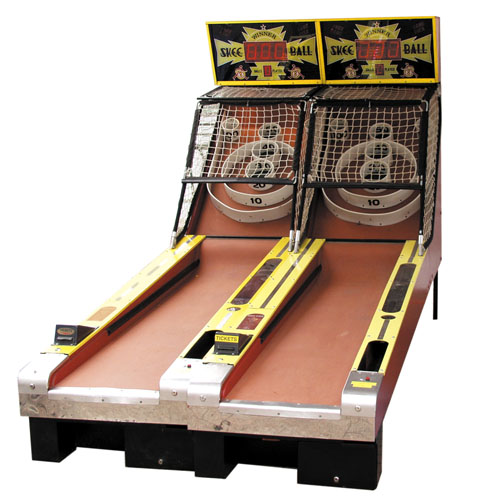http://www.techdose.com/articles/The-History-of-SkeeBall-Machines/405/page1.html
Skee ball electronic technology has advanced throughout its 100 years of history, especially in the past 30 or so.
The very early skeeball machines (1909 thru 1930s) were completely mechanical. After inserting a nickel or dime, you pulled a ball release lever which would both release the balls and trigger the mechanical resetting of the flip-style score unit.Some time later, possibly as early as the 1950s, electricity was added to the Skee-ball machines. These machines, known as “electro-mechanical” since they used electricity to activate mechanical components. In 1967 automatic ticket dispensers were added to the alleys. The electronics in these earlier Skee-ball machines were primitive in today’s standards, but many of these machine are still in service and functioning after 25+ years. These earlier alleys did not have sound effects, just the sound created by the ball-release mechanism and ball rolling down the alley. Possibly the most popular Skee-ball alleys are the “Model H” and “Model S” alleys. These machines are instantly recognizable, with red-and-yellow color scheme. Each of these CPU modules were total redesigns of the previous solid state boards that were used.
This relates to real world engineering because it shows how much recent technology has developed and how good electrical engineering has become. It also shows how advancements in technology are applicable to things that we see as old, and can make them seem new and exciting. It also shows that even things many people see as mundane are always advancing and always trying to get customers. It also shows how engineering can easily make products seem much more appealing than before.







